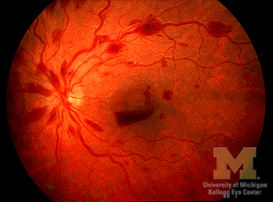
Understanding Retinal Vasculopathy: A Comprehensive Guide
Introduction
Routine eye exams are essential for the overall health of the eye. During a routine exam, certain abnormalities may be noted that need further evaluation to determine the exact nature of the issue, such as retinal vasculopathy. This comprehensive guide aims to provide an in-depth understanding of retinal vasculopathy, its causes, symptoms, diagnosis, and treatment options available.
What is Retinal Vasculopathy?
Retinal vasculopathy is a broad term used to describe various disorders affecting the retinal vessels. The retinal vessels are responsible for supplying blood to the retina, which plays a crucial role in visual perception. Any disruption in the blood supply to the retina can lead to various complications, including vision loss.
Bilateral Retinal Vasculopathy
Bilateral retinal vasculopathy is a condition in which both eyes are affected. Patients with bilateral retinal vasculopathy may experience a sudden decrease in visual acuity in one or both eyes. Symptoms may include distorted vision, floaters, or flashes of light.
Causes of Retinal Vasculopathy
The exact causes of retinal vasculopathy are still unknown. However, several factors can contribute to the development of this condition. The following are the common causes of retinal vasculopathy:
Medical Conditions
Medical conditions such as hypertension, diabetes, and atherosclerosis can lead to retinal vasculopathy. These medical conditions can cause damage to the blood vessels that supply blood to the retina, leading to various complications, including vision loss.
Infections
Infections such as HIV, syphilis, and tuberculosis can lead to retinal vasculopathy.
Autoimmune Diseases
Autoimmune diseases such as lupus and rheumatoid arthritis can also lead to retinal vasculopathy due to their impact on the immune system.
Symptoms of Retinal Vasculopathy
The symptoms of retinal vasculopathy may vary from person to person. However, the following are some of the common symptoms:
Decreased Visual Acuity
Patients may experience a sudden decrease in visual acuity, making it difficult to read, drive, or perform other activities that require clear vision.
Distorted Vision
Patients may experience distorted vision, making straight lines appear wavy or crooked.
Floaters
Floaters are dark spots or specks that float across the field of vision.
Flashing Lights
Flashing lights are small sparks of light that appear to flash in front of the eyes.
Diagnosis of Retinal Vasculopathy
The diagnosis of retinal vasculopathy is usually made by an ophthalmologist or a retinal specialist. The following are some of the diagnostic tests that may be performed:
Fluorescein Angiography
Fluorescein angiography is a diagnostic test that involves the injection of fluorescein dye into the bloodstream. The dye travels to the blood vessels in the retina, highlighting any abnormalities in the blood vessels.
Optical Coherence Tomography
Optical coherence tomography is a non-invasive diagnostic test that uses light waves to produce high-resolution images of the retina. This test helps to identify any abnormality in the retina and its structures.
Visual Field Test
Visual field tests are used to measure the patient’s peripheral vision. This test helps to determine the extent of visual field loss due to retinal vasculopathy.
Treatment Options for Retinal Vasculopathy
Treatment options for retinal vasculopathy depend on the exact nature of the condition. The following are some of the treatment options available:
Intravitreal Injections
Intravitreal injections involve the injection of medication directly into the vitreous cavity of the eye. This treatment is used for various conditions like macular degeneration, diabetic retinopathy, and retinal vein occlusion.
Laser Therapy
Laser therapy is a treatment that involves the use of a laser to treat retinal disorders. This treatment helps to repair or seal off leaking blood vessels in the retina.
Vitrectomy
Vitrectomy is a surgical procedure that involves the removal of vitreous gel (a clear, jelly-like substance) from the eye. This procedure is used to treat retinal detachment and macular holes.
Alternative Treatments for Retinal Vasculopathy
Alternative treatments may be used in conjunction with conventional treatments or as a standalone therapy. The following are alternative treatments:
Nutrition
Nutrition plays an essential role in eye health. Foods that are rich in omega-3 fatty acids, vitamins C and E, and lutein can help to reduce the risk of developing retinal disorders.
Acupuncture
Acupuncture is an alternative treatment that involves the insertion of fine needles into specific parts of the body. This treatment may help to reduce inflammation in the retina.
Conclusion
Retinal vasculopathy is a complex condition that can lead to vision loss. Early detection and treatment are essential in the management of this condition. Routine eye exams are critical in detecting any abnormality in the eye, including retinal vasculopathy. With proper treatment and care, patients can manage this condition and prevent significant complications.
Originally Post From https://jamanetwork.com/journals/jamaophthalmology/fullarticle/2819809?widget=personalizedcontent&previousarticle=2775577
Read more about this topic at
Retinal Vasculopathy with Cerebral Leukoencephalopathy …
Retinal Vasculopathy with Cerebral Leukoencephalopathy …
